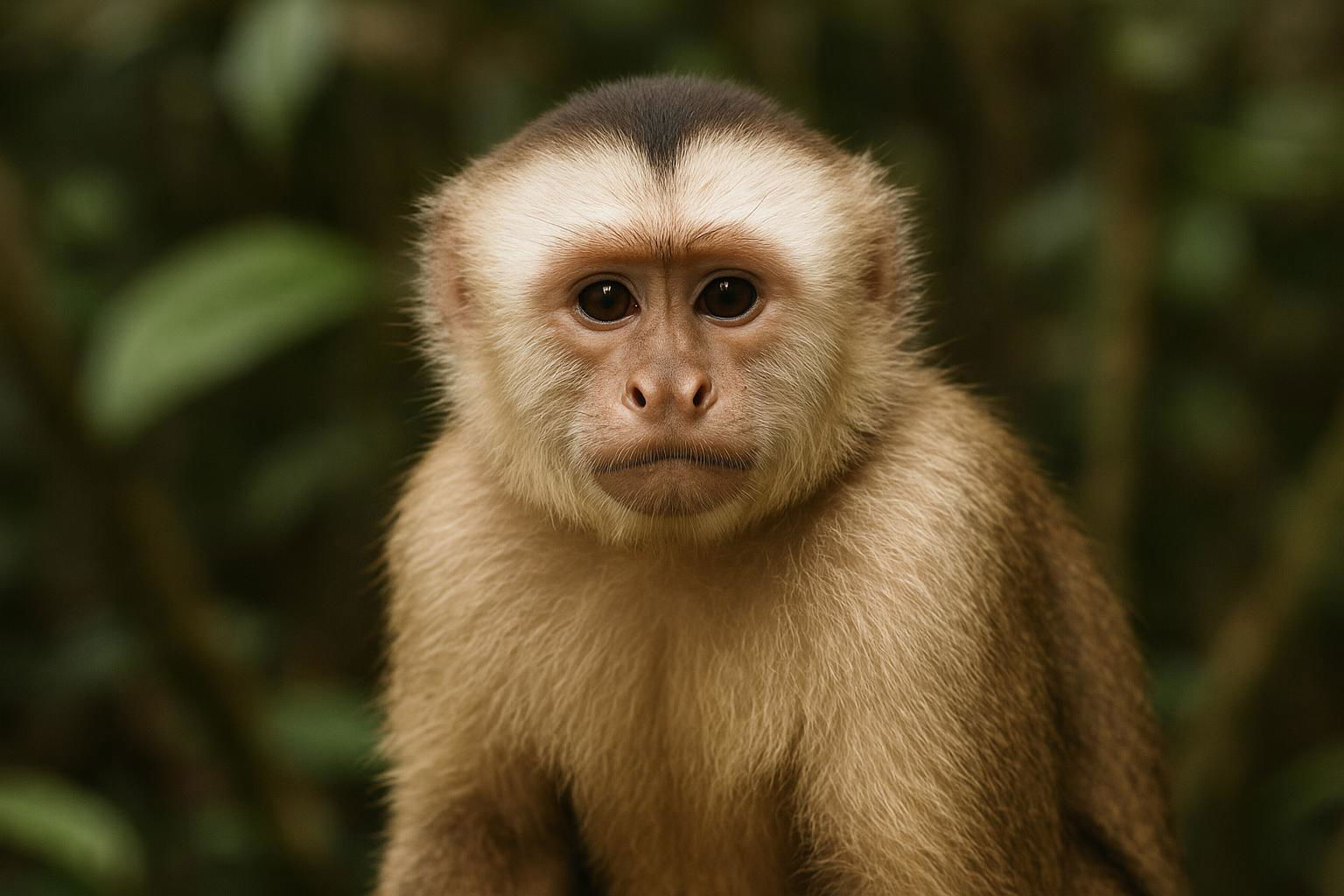
White-Fronted Capuchin
Cebus albifrons
The White-Fronted Capuchin, scientifically known as Cebus albifrons, is a versatile and intelligent primate native to the tropical forests of northern South America. Recognizable by its distinct white or cream-colored forehead, which contrasts sharply with its darker brown or black body, this species displays remarkable adaptability across various habitats, ranging from lowland rainforests to montane regions. Weighing between 2 to 4 kilograms and measuring about 40 to 50 centimeters in body length, these capuchins possess a long prehensile tail that aids in arboreal navigation.
Social creatures by nature, White-Fronted Capuchins live in multi-generational groups typically consisting of 10 to 20 individuals. They rely on complex social interactions and vocal communications to maintain group cohesion. Omnivorous in diet, they forage for fruits, insects, small vertebrates, and other plant materials, exhibiting sophisticated foraging techniques and tool use, which highlight their cognitive abilities.
Their social structure and dynamic foraging behavior are vital for their survival and adaptability to environmental changes. Despite their widespread presence, White-Fronted Capuchins face threats from habitat destruction and illegal wildlife trade, emphasizing the need for conservation efforts to ensure their continued presence in South American ecosystems.

 All Species & Breeds
All Species & Breeds
 Highland Cattle
Highland Cattle
 Miniature Donkeys
Miniature Donkeys
 All Species Directory
All Species Directory
 Highland Cattle in Virginia
Highland Cattle in Virginia
 Miniature Donkeys in Texas
Miniature Donkeys in Texas












